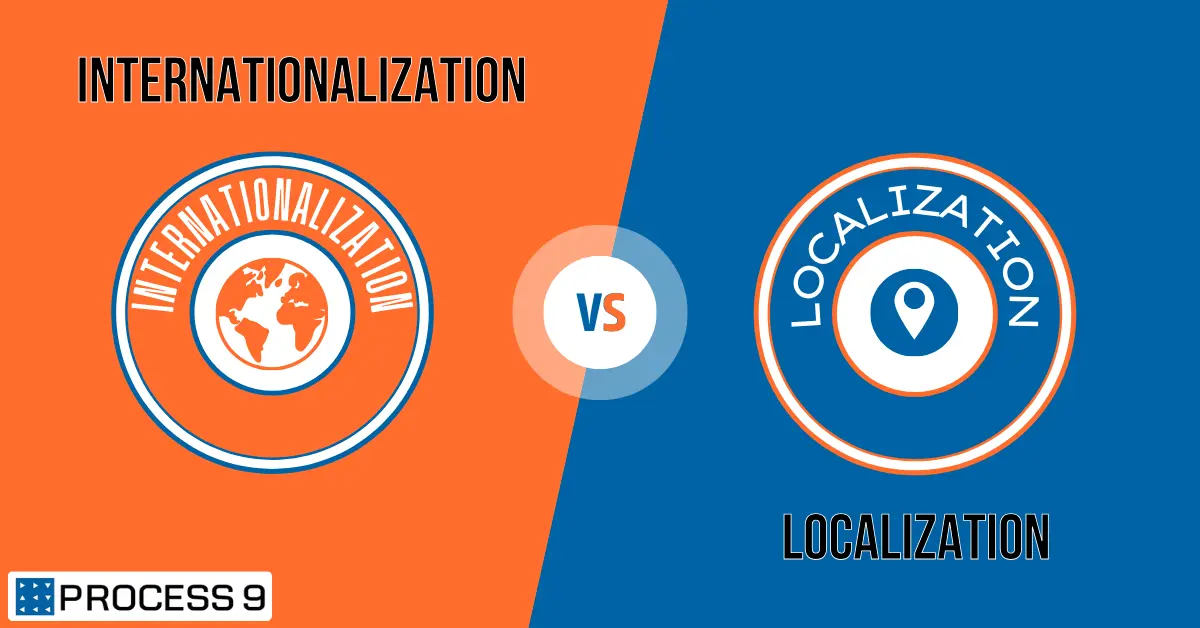In the modern world, extending a company’s reach beyond borders is crucial. This objective is accomplished in the digital marketplace by speaking with clients in the language of their choice. Localization and internationalization are two key terms that are often used in this context. While it might sound similar, these two distinct processes pave the way toward the common objective of making digital content accessible to a diverse set of audiences in a language of their choice.
In this blog, let’s dive deep into the core concepts of internationalization and localization, the key differences, and the importance of expanding the digital presence of your business beyond borders
What is Internationalization?
Internationalization (i18n) refers to the designing and development of a software product in such a way that it can be easily adapted in various languages without making any changes in the core structure. Internationalization is abbreviated as i18n, where 18 stands for the 18 letters between i and n. Internationalization allows the software to be adapted to various languages without any engineering changes. The key features of internationalization include,
- Unicode support
- Locale support
- String Externalization
- Unicode Normalization
- Text Expansion and Contraction
- Support for RTL languages
- Internationalized user interfaces
With Unicode support, the software can display texts in multiple languages and character sets. The locale support allows to adapt the software to various settings of the region such as currency formats, time formats, number formats, etc. String externalization makes localization of the software hassle-free as it separates user interface strings from its source codes. The text expansion and contraction feature aids in layout issues by accommodating varying text lengths in different languages. Internationalization supports Right-to-left languages such as Arabic and the internationalized user interfaces cater to the preferences of various target locales.
What is Localization?
Localization involves the translation and adaptation of the content and design of software in various languages. Localization is abbreviated as l10n where 10 stands for the number of letters between l and n. Along with translating the content into various languages, localization also involves adapting various elements of the software, website, or mobile app to adhere to the linguistic, cultural, and regulatory requirements of the target audience. Some of the key features of localization include,
- Language Translation
- Cultural adaptation
- Legal and regulatory compliance
- Graphic Design and User Experience
- Quality Assurance and Testing
- Multimedia Localization
The language translation feature handles the translation of all content types, including text, audio, and video. Cultural adaptation refers to the modification of content to meet the preferences of customers. Legal and regulatory compliance guarantees that the localized product meets the needs of the target market. Graphic design and user experience refers to the alignment of various elements of the user interface, layouts, and other images of the website, mobile app, or software to enhance user engagement.
Key differences between internationalization and localization
Although internationalization and localization are nearly identical processes, there are some significant differences.
- Internationalization is a one-time effort whereas localization is an ongoing process
- Internationalization provides a flexible and adaptable foundation for localization while the latter customizes the content and design of the website, app, or software to meet the linguistic needs of a particular market.
- Internationalization is done during the developmental phase whereas localization can be done on a completely developed product
- Localization customizes the product for a target market where whereas internationalization makes the product adaptable for various regions, languages, and cultures.
Recap
If you are a business looking to reach a global audience, internationalization and localization are two processes that you need to look up to. Making the right investment in both of these processes will give you a competitive advantage, improve the user experience, and drive global revenue growth. To summarize, internationalization and localization are critical strategies for realizing the full potential of your business’s global expansion.
What do we offer?
The top-of-the-line software products MoxVeda and MoxWave from Process Nine Technologies can help you achieve hassle-free internationalization and localization. MoxVeda is an AI-powered platform that can aid pain-free and easy internationalization. It is highly secured and is compatible with all the major tech stacks. MoxWave is a comprehensive neural machine translation API that can be effectively integrated with existing systems. Localization efforts can be made simple and scalable by leveraging the combined capabilities of MoxVeda and MoxWave.
Are you planning to expand your business to global markets? Talk to one of our experts today







Share: